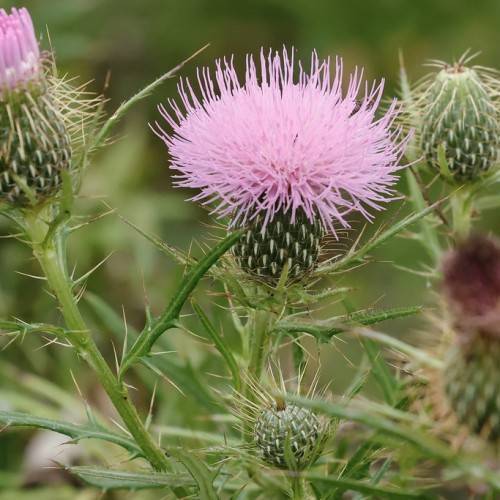
Field Thistle
Cirsium discolor
Also Known As - Pasture ThistleWatering:
Minimal
Hardiness Zone:
Sun:
full sun
Fruits:
Fruits Ready In Fall
Leaf:
Yes
Growth Rate:
Low
Salt Tolerant:
Yes
Thorny:
Yes
Invasive:
Yes
Care Level:
Medium
watering
Short Styled Thistle (Cirsium brevistylum) should be watered once or twice a week depending on the season and temperature. Water the plant deeply, saturating the root zone to a depth of 6-10 inches. Reduce the frequency of watering if the plant begins to show signs of stress such as wilting or yellowing of leaves. During hot and dry weather, water may be necessary more than twice a week. During cooler and wetter weather, watering can be reduced to once a week. Soil should be allowed to dry out slightly between waterings. If the soil is overly wet, you may need to reduce watering frequency to avoid root rot.
sunlight
Short Styled Thistle (Cirsium brevistylum) prefers full sun conditions for best growth. 6 to 8 hours of direct sunlight during the day is ideal, although it can tolerate some partial shade throughout the day. The plant does best in warmer climates with plenty of sun and is moderately drought tolerant. In hotter and more arid climates, it is important to provide supplemental irrigation to keep the plant healthy and robust. For most regions, daytime temperatures should range from 60-80 degrees Fahrenheit with slightly cooler nights.
pruning
Short Styled Thistle should be pruned in early spring when the danger of frost has passed. For best results, the plant should be pruned hard and back to the ground each year. This will help promote healthy, strong growth and discourage spread of the plant. Care should be taken when pruning to avoid destroying the florets, as this can result in a loss of the plant’s aesthetic value. Pruning should focus on removing any dead, damaged, or diseased foliage, as well as any excess growth that could lead to congestion in the plant. By maintaining diligent pruning, the short-styled thistle should remain healthy and beautiful throughout the growing season.
